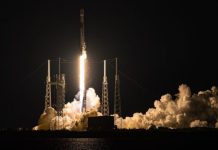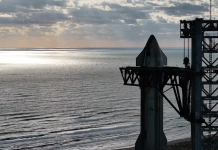SpaceX gets close to important Starship launch – SN15 prototype has been fired
Today at 12:57 am Moscow time, SpaceX conducted the first static fire test of the Starship SN15 reusable spacecraft prototype. The three Raptor engines briefly caught fire while the ship remained docked at a SpaceX launch pad in South Texas, near the village of Boca Chica on the Gulf Coast.

But SN15 (short for Serial Number 15) will not remain land-bound for long. Today’s firing tests were a key test ahead of the test flight, soon taking the car about 10 kilometers into the Texas sky. At least Elon Musk has promised a launch this week.
SN15 will be the fifth prototype to attempt a 10 km flight. The other four took off well, but the landing still does not add up. On March 30, SpaceX launched its SN11 to an altitude of 10 kilometers, but it exploded before reaching the ground. The company had previously managed to land SN10, although the rocket exploded minutes after landing. Before that, two more tests of the Starship SN8 and SN9 were carried out at the same altitude – the prototypes managed to take off and carry out the necessary maneuvers, but they crashed during landing.
According to SpaceX, SN15 is the beginning of a second important phase of Starship testing before the third, which already involves launches into space. The SN20 orbital prototype, which could arrive by July, will receive a full heat shield system and be tested along with a stage separation mechanism (the SN20 ship will launch the huge Super Heavy BN3 reusable main stage).
SpaceX is developing Starship to deliver people and cargo to the Moon, Mars, and other distant locations. The final system will consist of the 50-meter-high Starship spacecraft, which NASA recently selected as the lunar lander for its Artemis program, and a giant 70-meter Super Heavy launch vehicle. Both elements will be fully reusable, potentially significantly reducing the cost of space travel. SpaceX expects the final system to be fully operational by 2023.




